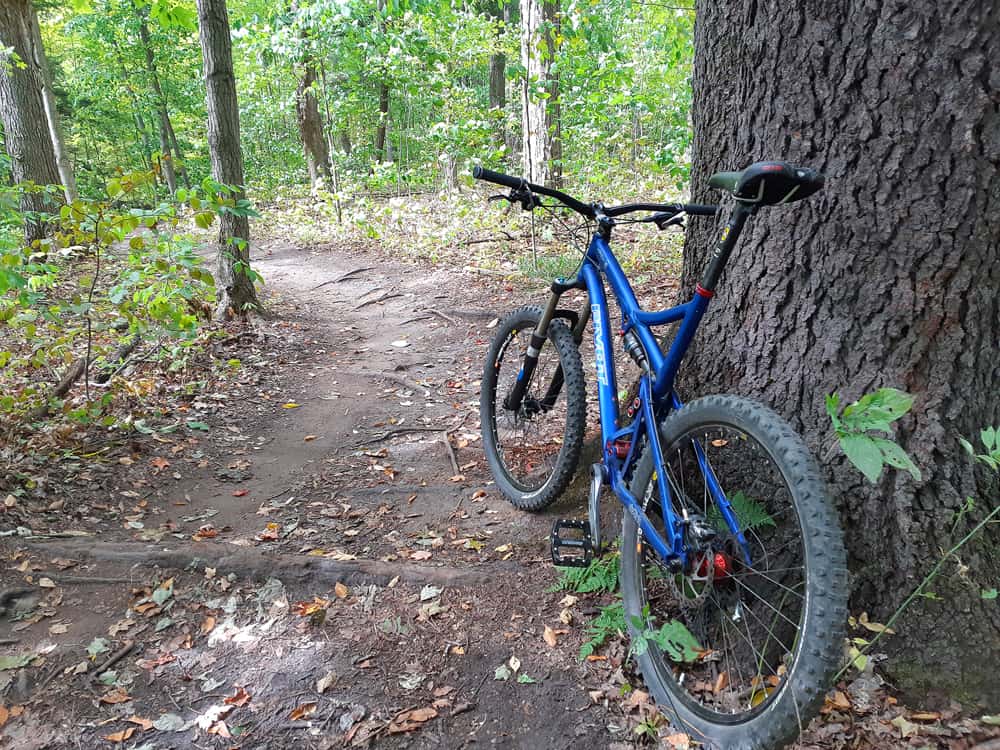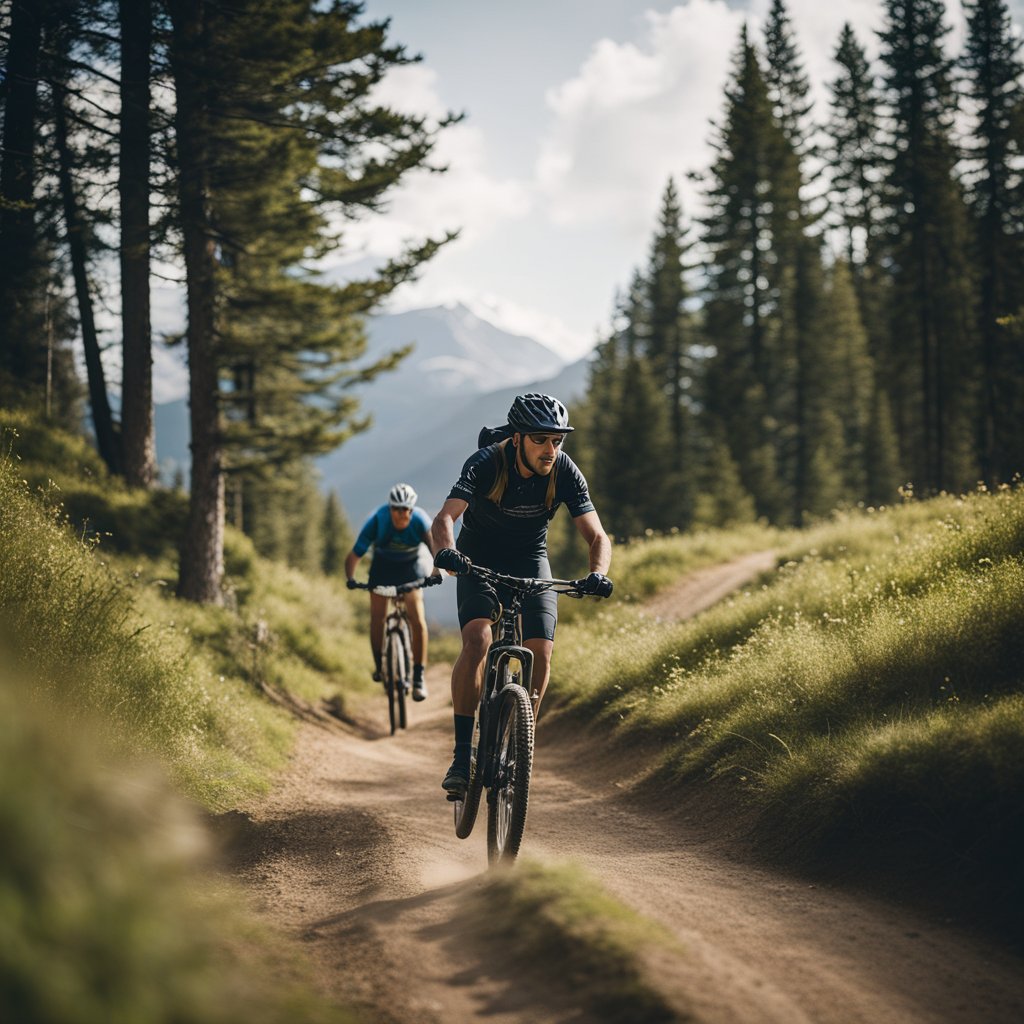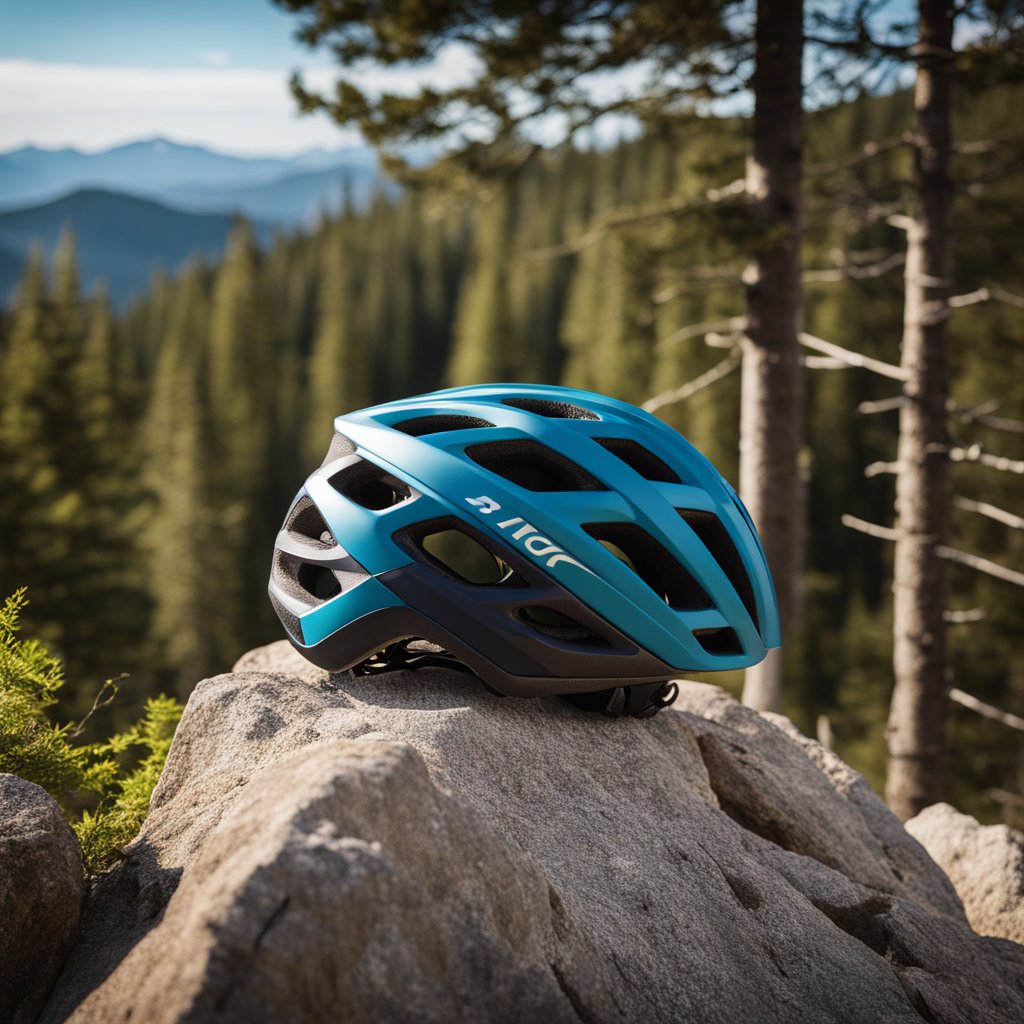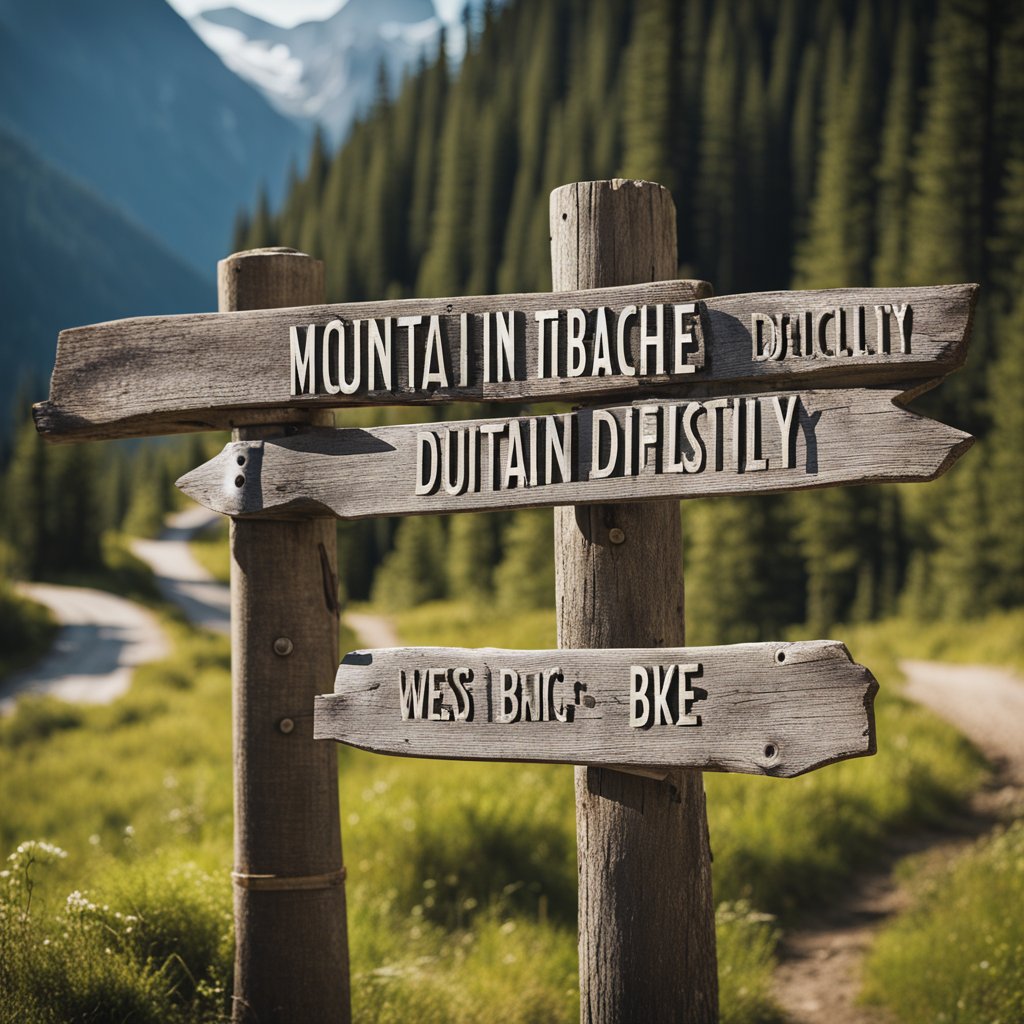Mountain biking is one of those sports that requires continuous improvement. Even the most seasoned riders always have something that they need to work on or get better at. Improving your riding skills also keeps mountain biking fresh and exciting.
Perhaps the easiest way to increase your skill level is to ride with someone who is better or faster than you. Without even realizing it, you’ll get used to keeping up with their pace and some of their skills will likely rub off on you too. Study them and learn from them (but don’t be creepy!) and you’ll be able to improve your riding in no time.
What skills do you need for mountain biking?
Taking the time to focus on getting better at these skills is sure to make you a better, faster, and more confident mountain biker:
The Track Stand
Balance is a huge aspect of mountain biking. After all, you’re tackling rough, uneven terrain – and doing so on only 2 wheels. The slower your speed, the more your balance comes into play. Improving your Track Stand skills will lessen your need to put a foot down when things slow down and can even save you from a potential crash.
The Track Stand can often be seen being done by trials riders. They’ll come to a complete stop and balance their bike without putting their foot down. This usually happens when they need a quick rest to catch their breath or to reset themselves before tackling the next obstacle.
In trials riding, you aren’t allowed to put your foot on the ground. Being able to balance on your bike without moving is crucial in this style of riding.
How does it help in mountain biking?
Being able to stop your bike completely without putting your foot down is more than just a way to show off to your buddies. It helps you to be comfortable with your bike’s balance point and builds your overall confidence in a big way. The faster you ride, the easier it is to balance. So by training yourself in the most difficult scenario, everything else you might encounter on the trail becomes easy.
How to practice:
Practicing your Track Stand is easy and can be done nearly anywhere. You won’t need to pack up your bike and head to your local trail – you can do this inside your house if you want to. Simply ride forward a few feet then stop. Keep your wheel turned slightly, and try to feel out where the bike likes to balance with you on it.
If you begin to lose your balance, give the pedals a gentle kick to move forward slightly. You can also work the rear brake a bit to help stabilize yourself. This is less about technique and more about spending enough time to get the feel for it. This might be difficult at first, but stick with it and eventually you’ll get the hang of it.
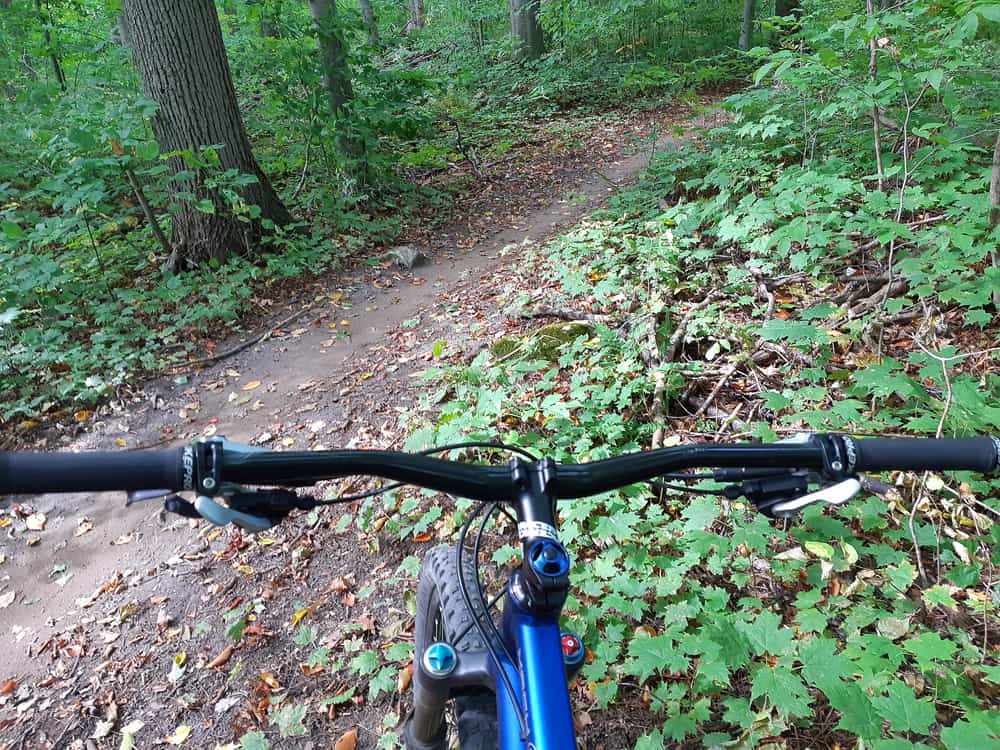
The Wheelie
Learning how to Wheelie is another way to improve your overall balance. If you can get comfortable riding on 1 wheel, imagine how easy riding on 2 will feel! If nothing else, mastering the Wheelie will impress your fellow riders.
How does it help in mountain biking?
Being able to do a Wheelie is a valuable skill when trail riding. There are many situations where you’ll need to be able to lift your front wheel over an obstacle. In most cases, this will be a quicker, subtle motion at speed. Being able to confidently hold your front wheel up in the air at slow speeds will make you even more confident in those easier situations.
It also helps you to further master the balance point on your bike. Keep in mind, balancing your bike doesn’t just mean side to side – you have to know how far back you can lean without flipping over too. Learning how to Wheelie gets you comfortable with knowing where that limit is.
How to practice:
Find a flat piece of ground (you can do it on grass for a little added safety) and start getting used to the feeling of lifting your front wheel off the ground. You’ll find that giving the pedals a few harder kicks timed perfectly with a moderate lift on the handlebar is what it takes to get a good Wheelie going.
Always make sure to keep a finger on your rear brake – if you feel like you’re leaning too far back or about to flip over, give it a tap and your front wheel will come right back down.
The Endo
If you haven’t heard of an Endo before, it’s the opposite of a Wheelie. Instead of balancing on your rear wheel, you shift your weight and use your brake to balance on your front wheel. For most, this is harder to master than the Wheelie and has a higher potential for crashing. It’s hard to get your hands out in front of you to brace your fall if you go too far.
How does it help in mountain biking?
The Endo might not have as big of a purpose in mountain biking as the Wheelie but it’s still helpful to learn. Admittedly, you won’t find many situations where you have to stop and dramatically lean forward on one wheel. But there are times on trails with really tight corners that you might want to combine this with the Track Stand to maneuver your bike.
Taking the corner normally might result in a loss of balance but being able to pick up your rear tire and swing it around will keep you rolling. Plus, you’ll look like a rockstar doing it!
How to practice:
This is the same concept as practicing the Wheelie. Find some flat ground and get the feel for how much you need to squeeze the front brake while leaning forward in order to lift the rear tire.
Be careful! Make sure you do this gradually and work up towards the balance point. Grabbing a handful of front brake and leaning forward will surely result in a face plant if you’re inexperienced.

The Bunny Hop
This is a silly name for a very useful mountain biking skill. I would argue that this could be the most important skill in this list. The Bunny Hop involves jumping your bike off the ground without the help of any type of ramp or jump.
How does it help in mountain biking?
Being confident in your ability to hop your bike over an obstacle at any given time is a big deal. You never know what’s around the corner – even if it’s your favorite trail. There could be a new obstacle that wasn’t there before when you rode it last. You need to be able to hop over branches, logs, rocks, debris, or even small animals to be able to ride safely at speed.
How to practice:
This can be done in the same place you practice your Wheelie and Endo. There are 2 different ways to perform a Bunny Hop. You can lift both wheels off the ground at the same time by jumping straight up (this is easier when using clipless pedals) or you can rock back onto the rear wheel, then bounce it up to get both wheels in the air.
The latter is a more effective way to jump over an obstacle because you don’t have to worry as much about timing it too soon and having your rear tire land on or in front of it.
Sprinting
There will be times when you’ll need to put the hammer down and gather as much speed as quickly as possible. This isn’t so much about learning how the actual act of sprinting (just pedal really hard!). It’s more about knowing when and how to use it to your advantage.
How does it help in mountain biking?
Work smart, not hard. While riding a trail, you should be looking far enough ahead to be able to plan for what happens next. If you see a steep uphill coming, you can make things a lot easier on yourself by building up some extra speed on the flat or downhill section beforehand. By the time the incline of the hill slows you back down, you’ll already be halfway up!
Knowing how to properly time the trail will make you a faster, more efficient rider.
How to practice:
Sprinting isn’t necessarily something you need to go out and practice specifically (although you can if you want to). This is more something to keep in the back of your mind while you’re riding a trail. Play around with it and see if you can notice a difference in how much fatigue you feel after climbing the same hill. Eventually, it’ll become something you do without having to think about it.

Trail Braking
Most people will teach you to scrub all of the necessary speed off before you enter a turn. That’s definitely good advice. Trail braking is a little different. It involves dragging the brake in a smooth, controlled manner (typically the rear brake for safety) while you navigate a turn or series of turns.
How does it help in mountain biking?
Trail braking is a skill that can bail you out when you get in over your head. It can save you if you’ve entered a turn with way too much speed. Often, it will allow you to slow down just enough to be able to stay on the trail rather than flying off into the cabbage.
We all make mistakes and misjudge upcoming corners. That’s why it’s important to be comfortable with dragging the brake in a stressful situation instead of freezing up and panicking.
How to practice:
Find your favorite corner on one of your regular trails and ride it over and over again. Once you get used to navigating it at a safe, conservative speed, try coming in a little too hot and drag the rear brake to keep you on track. Like everything else, you’ll want to build up to this. Don’t just hit it at 3 times your normal speed. Get used to how it feels to have the rear brake pull you back in line, even when you’re a little off balance.
Skidding
This is another one that might seem to only be used to show off. Skidding is a form of being out of control on your bike though and it can happen whether you mean to or not.
How does it help in mountain biking?
First of all, skidding on purpose is typically frowned upon. There’s no need to chew up the surface of the trail unless you have to. There will be times where you have to, though.
Any time you lock up your rear wheel, you lose all traction. If this happens while you’re traveling in a straight line, it’s not the end of the world. It’s when you start sliding sideways that can really scare you if you aren’t prepared.
Skidding might happen unintentionally while riding down really steep downhill sections, or intentionally when trying to make it around a tight corner. The more comfortable you get with this feeling, the less likely you’ll be to panic when it happens.
How to practice:
Find a flat section of dirt or gravel and allow yourself to go right back to your childhood. Gather some speed, lean forward slightly, and lock up the rear wheel. You’ll learn quickly that there’s a certain balance point that will allow you to feel more in control of the skid. Gradually build up to faster skids and sliding sideways. Depending on the surface, this can accelerate the wear on your rear tire so keep that in mind.
Riding on snow and ice
If you don’t do any mountain biking in the winter, why would you want to learn how to ride in those conditions? Riding in snow and ice is tough and any time we expose ourselves to something difficult, it gives us the chance to become a better rider.
How does it help in mountain biking?
If you’ve never ridden in these conditions, you probably won’t understand how it can help your riding in general. Riding in the winter is really slippery. Like, way worse than riding in the rain and mud. Once you break traction on ice, it’s nearly impossible to gain it back. This forces you to be light on your bike and learn to let it go where it naturally wants to rather than muscling it around.
How to practice:
This is pretty obvious. If you live in a climate that experiences snow and ice in the winter season, don’t use it as an excuse to stop mountain biking. It’s cold, uncomfortable, and potentially dangerous. It also has the potential to make you a much better rider in regular conditions. Who knows, you might just enjoy it!
For more on winter riding, make sure to check out this article on whether or not you need a fat bike to enjoy the snow.

Riding on sand
The concept of getting used to riding on sand is similar to riding on snow and ice. Your bike behaves a lot differently and it’s much harder to keep your momentum up and control your bike.
How does it help in mountain biking?
Sometimes we go through droughts in the summer and our beloved trails suffer. It’s common for high traffic turns to dry out and the dirt will eventually turn to sand. This might not be quite the same as riding on a beach, but it’s an uncomfortable feeling.
The same turn that you used to be able to zip through without touching your brakes becomes much more treacherous when it turns to sand. Training yourself to be confident while riding on this surface will help you when you’re faced with a surprise in dry conditions.
How to practice:
If your local trails don’t have any sandy sections, head to a playground or beach. It won’t take long for you to realize how different this surface is. There isn’t a whole lot you can do – this is mainly about understanding what sand does to the way your bike behaves. It will slow you down in a hurry and it’s much harder to turn and accelerate.
Riding while exhausted
This might seem like a strange skill to work on. But if you’ve ever been on a long ride, you know that you don’t exactly feel as fresh and alert as you do when you first start riding.
How does it help in mountain biking?
You’re bound to have days when you just aren’t feeling yourself. That doesn’t mean that you can’t still go for a ride, but you have to understand that you might not be operating the same as usual. Your reaction time, balance, focus, and senses can all change when you’re tired. Nearly every time I’ve crashed in the last few years has been on days when I was tired or not feeling normal.
How to practice:
This isn’t really a skill to learn. It’s something you need to pay attention to. Once you’re aware that you aren’t feeling normal, you can make adjustments in an effort to keep yourself safe. You might want to change your plans and ride an easier trail or at least drop your speed down to give yourself extra time to react. Knowing your body is an important but often overlooked aspect of mountain biking. Stay alert!
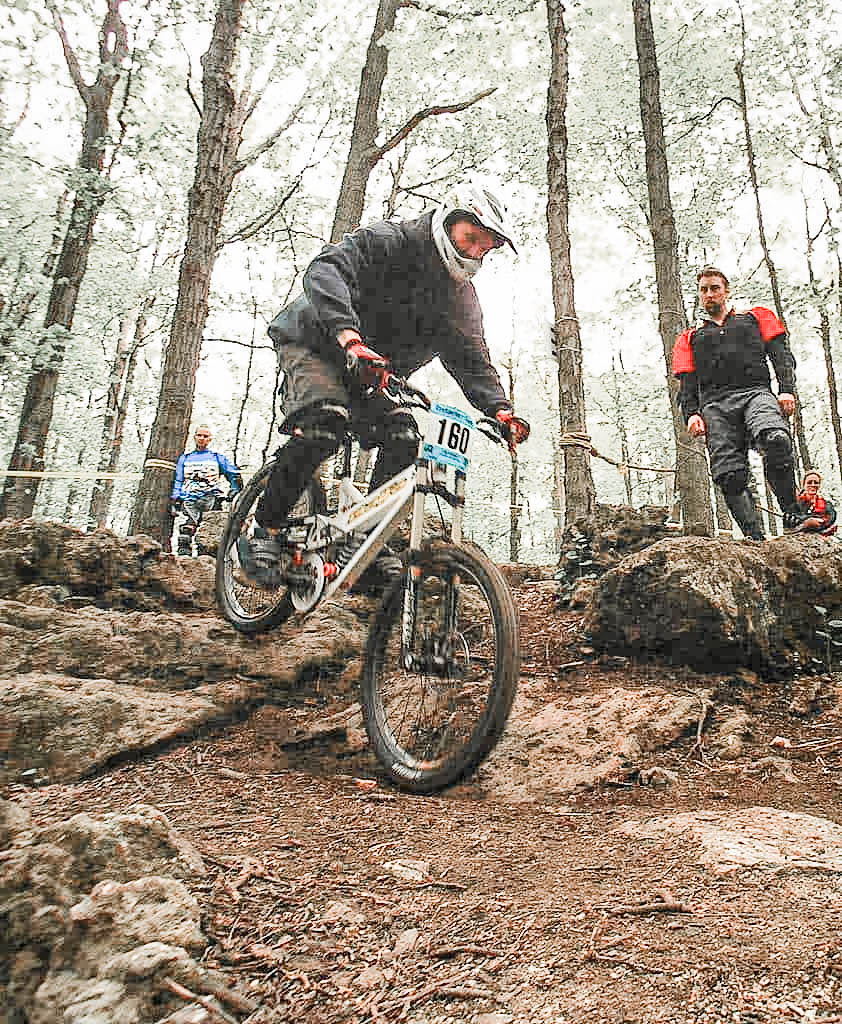
Tim is the founder of SimpleMTB and has been mountain biking for decades. He raced in the Ontario Cup series during his teenage years and riding continues to be one of his favorite hobbies now as an adult.
